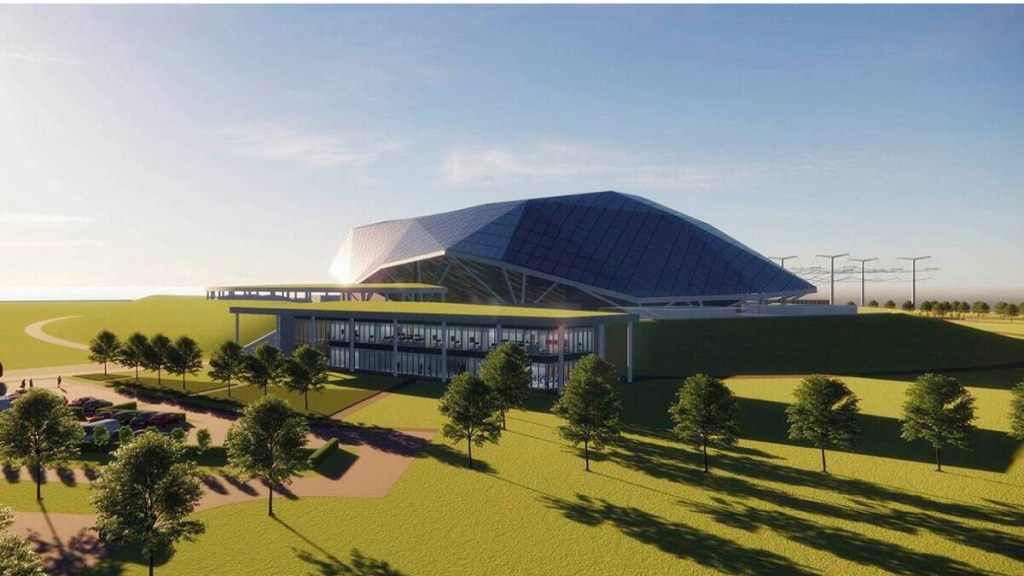By Dr Sitakanta Mishra
On 16 May 2023, G20 Sherpa Ambassador Amitabh Kant, while addressing a session at the third energy transition working group (ETWG) meeting in Mumbai, called for “unfettered access” to cutting-edge nuclear technology from the USA, besides allowing the private sector, to build small modular reactors (SMRs) in India. Previously, India’s Minister of State Jitendra Singh in an address to a workshop on SMRs held by the NITI Aayog in November 2022 revealed that India is taking steps for the development of SMRs to fulfil its commitment to clean energy transition. These pronouncements indicate that India is steadfastly engaged with SMR R&D.
Reportedly, in November 2022 the Department of Atomic Energy (DAE) has “held closed-door consultations with domestic and global industry players who showed significant interest” to become stakeholders in SMR development in the country. During the last ETWG meeting in Mumbai, both American and Russian industrial houses expressed their keen interest in sharing advanced SMR technology with India.In terms of options for foreign collaborations, India can look towards either Russian or US companies.
Russia has been a long-term partner for India in terms of nuclear energy cooperation and Rosatom, the Russian nuclear energy corporation, remains the only company with operational SMR capabilities as of now. Rosatom has multiple SMR options as well: 1) the RITM200N, the world’s first land-based water-cooled reactor, is under construction and planned to be commissioned in 2028; 2) the RITM200S, a pressurised water reactor of 105 MWe, is a floating SMR whose construction started in August 2022 and scheduled to complete by 2027; 3) the KLT-40S is a 35MWe floating reactor named Akademik Lomonosov is already connected to the grid in Pevek in Russia’s far eastern region.
Dr Alexandre Volgin, Director of Project Rosatom, while speaking at the G20 international seminar in Mumbai on the role of SMRs in energy transition on 18 May 2023 expressed that “we are thrilled to share Rosatom’s experience and knowledge on SMRs with India, who has been our trusted partner throughout the years. We firmly believe that our expertise and knowledge in the development, construction, and operation of small modular reactors will play a pivotal role in facilitating the global energy transition towards a sustainable future. We have several exciting upcoming projects in the future, and look forward to collaborating and partnering with the Indian government and Indian industrial partners in pursuing these opportunities”. This suggests that Russia is eagerly anticipating collaborating with India and its partners to harness the full potential of SMRs in the upcoming projects in the country.
The known alternative is the American company Holtec International. Holtec uses light water technology in its SMRs to produce 160 MWe which is air-cooled, and convenient to locate even in a desert with low cost. If made in India, its construction cost is expected to reduce by 20 to 30% from its average cost of $1 billion. Its subsidiary, Holtec Asia with its engineering office in Pune (Maharashtra) and manufacturing plant in Dahej (Gujarat) has been involved in the supply of high-density fuel racks for Kudankulam’s away-from-reactor storage facility.
Although the Science and Technology Minister Jitendra Singh has stated about India’s decision to work on SMRs, no specific information is available in the public domain regarding the modalities and plans on the new venture. By joining the policy pronouncement dots during the last few years on SMR technology for India, one would assume that the National Thermal Power Corporation Ltd. (NTPC) in partnership with the Nuclear Power Corporation of India Ltd. (NPCIL) would venture into SMR projects in collaboration with foreign companies,and station them in de-commissioned thermal plants.
So far, the private companies supply some components to Indian nuclear plants but cannot be partners in operating the reactors yet.The Department of Atomic Energy (DAE) for the first time plans to construct the country’s first research reactor for the production of medical isotopes using a public-private partnership (PPP) model. “Exclusive rights to process and market the radioisotopes produced in the reactor”will be granted to private entities willing to invest in the construction of the reactor and its processing units.
For SMRs to base on the PPP model, additional legislative initiative to be undertaken to allow the private players to address the issue of technology sharing and availability of funding to fructify commercial viability. The NITI Aayog’s report while recommending to overturn ban on foreign investment and allow for greater participation of private Indian companies in the domestic nuclear industry, highlights the urgency of “global regulatory harmonisation, developing manufacturing ecosystem and bringing in public as well as private capital would be the key for growth of the SMR industry.” Recently,NTPC and NPCIL have signed an agreement for joint development of nuclear power plants in Madhya Pradesh and Rajasthan.
Partnership with foreign companies does not mean that India is not capable of design, build, and operate SMRs indigenously; it has good experience of having built an 85 MWe reactor for its nuclear submarine. “While it has not utilised a modular factory process so far, the industry involved in manufacturing nuclear equipment is keen to build such reactors”, says Manpreet Sethi, a Distinguished Fellow at the Centre for Air Power Studies, New Delhi. The need of the hour, and the DAE rightly on this path, is to ambitiously expedite reactor build-up of higher capacity; meanwhile India should not lag behind in mastering cutting-edge technology of SMRs.
The author is Associate Professor, School of Liberal Studies (SLS), Pandit Deendayal Energy University (PDEU), Gujarat.
Disclaimer: Views expressed are personal and do not reflect the official position or policy of Financial Express Online. Reproducing this content without permission is prohibited.


